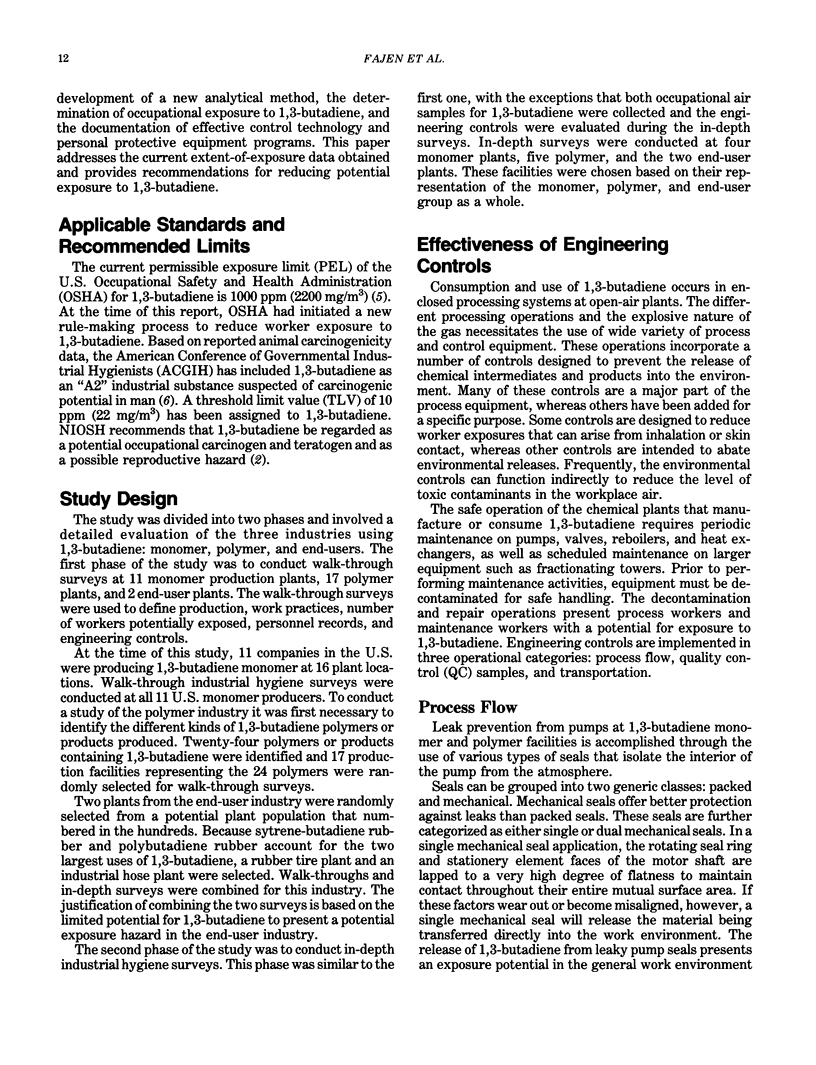Abstract
Researchers from the National Institute for Occupational Safety and Health (NIOSH) conducted an extent-of-exposure study of the 1,3-butadiene monomer, polymer, and end-user industries to determine the size of the exposed workforce, evaluate control technologies and personal protective equipment programs, and assess occupational exposure to 1,3-butadiene. A new analytical method was developed for 1,3-butadiene that increased the sensitivity and selectivity of the previous NIOSH method. The new method is sensitive to 0.2 microgram per 1,3-butadiene sample. Walk-through surveys were conducted in 11 monomer, 17 polymer, and 2 end-user plants. In-depth industrial hygiene surveys were conducted at 4 monomer, 5 polymer, and 2 end-user plants. Airborne exposure concentrations of 1,3-butadiene were determined using personal sampling for each job category. A total of 692 full shift and short-term personnel and 259 area air samples were examined for the presence of 1,3-butadiene. Sample results indicated that all worker exposures were well below the current OSHA PEL of 1000 ppm. Exposures ranged from less than 0.006 ppm to 374 ppm. The average exposure for all samples was less than 2 ppm. The present American Conference of Governmental Industrial Hygienists (ACGIH) threshold limit value for 1,3-butadiene is 10 ppm. To reduce the potential for occupational exposure, it is recommended that quality control sampling be conducted using a closed loop system. Also all process pumps should be retrofitted with dual mechanical seals, magnetic gauges should be used in loading and unloading rail cars, and engineering controls should be designed for safely voiding quality control cylinders.
Full text
PDF







Selected References
These references are in PubMed. This may not be the complete list of references from this article.
- Owen P. E., Glaister J. R., Gaunt I. F., Pullinger D. H. Inhalation toxicity studies with 1,3-butadiene. 3. Two year toxicity/carcinogenicity study in rats. Am Ind Hyg Assoc J. 1987 May;48(5):407–413. doi: 10.1080/15298668791384959. [DOI] [PubMed] [Google Scholar]


